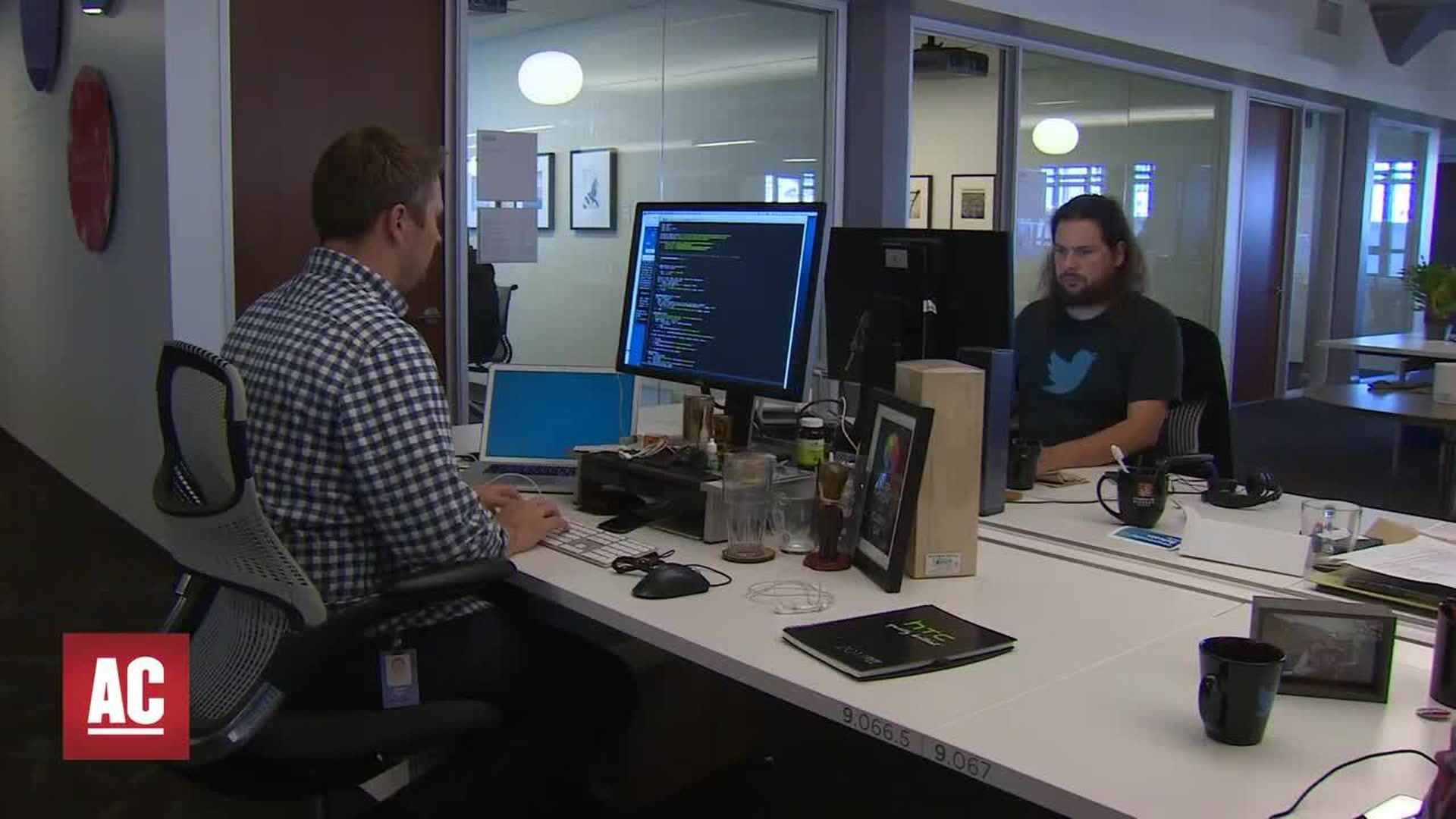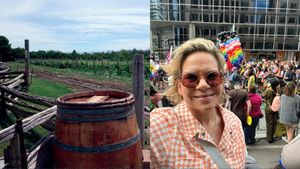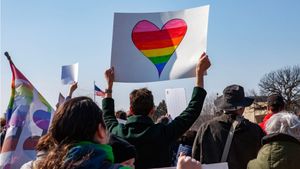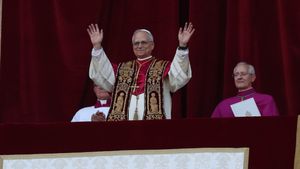
Video Source: Advocate Channel
New York (CNN) — It’s been one year to the day since Elon Musk completed his purchase of Twitter for $44 billion and set the company, along with its employees and users, off on a whiplash-inducing series of twists and turns.
Twelve months on, the company barely resembles its former self — and not only because Musk renamed it “X” and did away with its iconic blue bird branding. Through a dizzying and haphazard barrage of changes, Musk has transformed a profitable company once regarded as the world’s go-to source for breaking news and political commentary into a widely ridiculed platform that’s fighting just to break even and crippled by debt; that’s struggling to manage spam and disinformation; that’s alienated some of its biggest advertisers and users; and that’s casting about for purpose.
Even as Musk — and new CEO Linda Yaccarino — push their vision for X as an “everything app,” the company has seemingly no clear path back to prominence or respectability, or to recouping Musk’s massive investment.
Driving the transformation has been a relentless stream of layoffs, resignations and policy reversals, as well as messy product rollouts and unfulfilled promises. The company faces a series of legal challenges brought by everyone from former employees to company contractors and landlords that have further complicated its outlook. X is also the subject of multiple regulatory investigations by the US Federal Trade Commission, Securities and Exchange Commission and EU officials that could potentially lead to penalties, both for the company as well as Musk himself.
X claims engagement is up, but the company appears to use different metrics than it did prior to the Musk takeover, making a true comparison difficult. Visits to the company’s website are down 14% compared to last September, far outstripping the 3.7% decline industrywide over the same period, according to a report this month by the internet monitoring firm Similarweb.
Yaccarino said in a statement Thursday that she is “incredibly proud of the work our team has been doing to accelerate the future of X.” The X CEO highlighted some of the new products and features launched over the past year, including the ability for companies to post job listings, longer posts, and audio and video calls for Premium users, which rolled out this week. She said that X is “a place where everyone can freely express themselves, so long as they do so within the bounds of the law,” and added that safety remains a “critical priority” for the platform.
“If we can achieve all of this in just 12 months, just imagine the scope of our ambition for next year,” Yaccarino said.
X is now facing perhaps its biggest test yet under new ownership amid the ongoing Israel-Hamas war — and numerous tech watchdogs and civil society groups have raised alarms about false claims and propaganda linked to the conflict on the platform. And as next year’s elections in the United States and elsewhere raise fears about the further spread of misinformation campaigns, X’s value to the public conversation appears increasingly in doubt.
All of this unfolded over the course of just 365 days. But for many, likely including beleaguered users who have decamped for alternatives such as Threads, Mastodon and BlueSky, it’s felt more like a decade. Here’s a (non-exhaustive) account of how Musk has fundamentally changed Twitter since he made one of the most consequential acquisitions of the social media age.
Heads rolling
In a series of rolling layoffs in the months after his takeover, Musk axed what he would later describe as roughly 80% of the company’s headcount.
Few departments were left untouched by the layoffs. They affected positions in some of the company’s most critical areas: policy, trust and safety, communications, ethical AI, search and more. The result was a hollowed-out workforce charged with maintaining rickety systems that had already been described as brittle, and which Musk further shrunk in an effort to cut costs. Under Musk, the company’s technical infrastructure proved increasingly prone to meltdowns, resulting in a series of glitches earlier this year affecting users’ ability to use the site.
Along the way, Musk fired — or accepted the resignations of — key members of Twitter’s old guard, including its former CEO and CFO, as well as its general counsel, policy chief, chief privacy officer, chief information security officer, director of product management and head of trust and safety. Even some of the people who rose to become Musk’s trusted lieutenants at the company have already left.
The workforce cuts have prompted repeated questions, including from US lawmakers and regulators, about the platform’s ability to respond to threats to security and privacy, along with elections, misinformation and hate speech. And thousands of former employees have accused Musk of providing fewer severance benefits than they were promised, and some also allege he’s delayed severance benefits and payments to cover executives’ work-related legal fees.
Product and policy overhauls
In his zeal to restore what he describes as “free speech” to X, Musk has made numerous policy and product decisions that have altered what users can see on the platform.
He reversed Twitter’s ban on former President Donald Trump based on an unscientific poll of his followers, after previously saying the decision would be up to a “content moderation council” that never materialized. He also reinstated the suspended accounts of white supremacists and conspiracy theorists. He temporarily suspended several journalists from Twitter for their reports on a third-party account devoted to tracking Musk’s private jet (despite previously criticizing the platform’s suspension practices).
Under Musk’s leadership, the company removed specific protections for transgender people from Twitter’s hateful conduct policy. X made it easier for politicians and political candidates to qualify for newsworthiness exemptions from Twitter’s rules, when they would otherwise have their content restricted or removed. The platform overturned a 2019-era ban on political and issue advertising, and issued an updated, “zero-tolerance” policy on violent speech that was nevertheless vaguer and more subjective than what it replaced. And it updated Twitter’s privacy policies to say the company may allow users to opt-in to having their biometric information and job and education history collected by the platform.
But perhaps no change has been as significant as Musk’s move to replace Twitter’s legacy verification (“blue check”) badges with a new form of verification that no longer carries the explicit assurance of authenticity.
Days after his takeover, Musk debuted — then un-debuted, and later revived — a subscription feature that granted any user a blue verification badge if they paid for the platform’s $8 per month subscription plan. Critics warned that the system would lead to impersonation on a massive scale, and undermine a feature that once helped users to trust what they saw on the platform.
Sure enough, when the feature was first launched, Twitter faced a wave of verified impostors pretending to be everyone from Nintendo to LeBron James. After the platform revoked the badges of accounts who’d been verified under the old system, Musk offered to personally pay for verification for James and several other frustrated, high-profile users.
Under the new system, users who paid for verification have their posts boosted by the platform’s algorithm. And more recently, X rolled out an advertising revenue share program for verified users, rewarding those that drive engagement with payouts — creating potential financial incentives for engagement farmers and misinformation peddlers who share inflammatory or misleading claims.
As it dismantles old ways of thinking about content moderation, X leaders have repeatedly touted “Community Notes,” an expanded version of the “Birdwatch” user-generated moderation system that Twitter launched in 2021. X said this week that Community Notes now has more than 100,000 volunteer user-moderators in 44 countries who are participating in adding contextual labels to content on the platform.
But numerous reports have suggested that Community Notes is struggling to meet its mission, burdened by issues like delays in users adding labels and bad actors attempting to game the system. (Yaccarino said in Thursday’s statement that Community Notes are getting faster, and that “this product is not perfect, but it is improving rapidly.”)
In the meantime, Musk has also antagonized and pushed away many journalists who previously contributed to the spread of reliable information on the platform. Most notably, NPR and PBS abandoned the platform entirely in April after X labeled them as “state-affiliated media,” a designation the broadcasters said misleadingly implied they receive substantial backing from government entities or are not editorially independent. The platform later changed the label to “government-affiliated media” and then did away with it altogether, but the outlets have not returned.
Many of Musk’s content and product decisions have also led to what civil society groups have reported as a troubling spread of hateful speech on the platform.
Sluggish business
In the early days of Musk’s takeover, many of Twitter’s largest advertisers — including the likes of General Mills and the Volkswagen Group — paused their spending over concerns about X’s layoffs, content moderation capabilities and general uncertainty about the platform’s future.
The mass advertiser pullback tanked the company’s revenue, and it still has yet to fully recover. Musk has lashed out over the brand revolt, accusing his critics of deliberate sabotage and even going so far as to sue one watchdog group, the Center for Countering Digital Hate, and threatening to sue the Anti-Defamation League, alleging they damaged the brand with claims about surging hate speech on X.
For its part, X has claimed hate speech is down and has touted new brand safety controls that purport to allow advertisers to restrict what kinds of content their ads can run next to. But even those safety offerings appeared to run into some early road bumps.
The company’s leaders have offered conflicting views on the state of its finances — making it unclear when and if X’s business can be revived.
Musk said in July that the company remained cash flow negative because of a 50% decline in ad revenue and heavy debt load. A month later, Yaccarino said many top advertisers had returned and the company was “close to breakeven.” The next month, Musk said US advertising revenue was “still down 60%.” Weeks later, Yaccarino said the company could return to profitability early next year.
Meanwhile, the banks that lent to Musk to finance his takeover are still struggling to offload the debt due in part to the billionaire’s chaotic leadership, the Wall Street Journal reported this week.
Yaccarino’s ascension to CEO in June signaled Musk’s commitment to winning back advertisers; her track record as an NBCU ad executive, along with the cheery persona she projected on X, seemed to foretell a brighter future for the company. But as Musk has continued to make off-hand announcements about the company’s roadmap, at times seemingly taking Yaccarino by surprise, outsiders have widely wondered about the true extent of Yaccarino’s authority and influence within the company.
In an interview last month, Yaccarino stressed that she does have autonomy from Musk as CEO. “Elon works on the technology and dreams up what’s next,” she said. “I bring it to market.”
Musk’s erratic behavior
Through it all, Musk has become the platform’s most consistent main character, weighing in on the largest issues of the day whether he is informed about them or not. When Paul Pelosi was brutally attacked in his own home, Musk baselessly amplified fringe conspiracy theories about the assault. He recommended that X users monitor the Israel-Hamas conflict by following an account known for spreading disinformation, before later deleting his post. He has obliquely defended “Dilbert” creator Scott Adams over racist comments and has condemned the financier George Soros, a frequent target of antisemitic conspiracy theories.
Musk appears to harbor an obsession with his own popularity on the platform, reportedly pressuring engineers to boost his own posts in users’ feeds after complaining his posts got fewer views than President Joe Biden’s during the Super Bowl.
In other contexts, Musk has leveraged his ownership of Twitter to promote politicians he personally favors, such as by helping to launch Florida Republican Gov. Ron DeSantis’ presidential campaign by way of a live Spaces event plagued by technical glitches. A week after that event, Musk held another Spaces event to promote Robert F. Kennedy, Jr., the vaccine skeptic and another presidential hopeful, and he promoted an interview between former Fox host Tucker Carlson and another republican contender, Vivek Ramaswamy. He has also hosted Benjamin Netanyahu, the conservative Israeli prime minister for a live discussion on X. Musk has said he’s willing to host candidates from across the ideological spectrum, but so far few if any politicians whom Musk disagrees with have been promoted in similar events.
And, in an attempt to prove that former Twitter executives deliberately discriminated against conservatives on the platform, Musk provided a handpicked group of journalists with selective access to company records. The resulting reports, known as The Twitter Files, purported to reveal a nefarious campaign of suppression. However, the internal communications actually corroborated existing accounts of how Twitter struggled to handle a 2020 New York Post article involving Hunter Biden and his laptop. Musk’s own lawyers later would go on to dispute the insinuations and allegations in The Twitter Files as they tried to prevent Trump from pursuing a case against the company in court.
Musk has also used the platform to promote his other companies and to hit back at his detractors — everyone from former employees to various regulatory bodies scrutinizing his ownership of the platform.
It is perhaps Musk’s all-consuming presence that has most undermined what users used to love about Twitter. The platform was once a place to hear from lots of different kinds of voices; where any given user might be leading the day’s “discourse” with the newsiest, most entertaining or controversial bit of content; where there was indeed sometimes toxicity, but it was generally overpowered by useful, up-to-the-minute news and commentary. Now, it’s the Musk show, and users increasingly seem inclined to tune out.
The-CNN-Wire
™ & © 2023 Cable News Network, Inc., a Warner Bros. Discovery Company. All rights reserved.
- This New Feature on X Is Changing News, But Not For the Better ›
- Elon Musk’s X Slammed For Spreading Misinformation on Israel-Hamas Conflict ›
- Elon Musk Levies Anti-Semitic Insults Against George Soros ›
- Elon Musk's X Is Making Money Off of Israel-Hamas Misinformation ›
- 5 Elon Musk Twitter Blunders We Don't Talk About Enough ›
- Elon Musk: Unserious at His Best, Dangerous at His Worst ›


















































